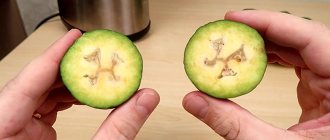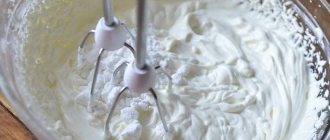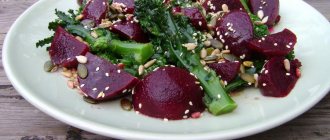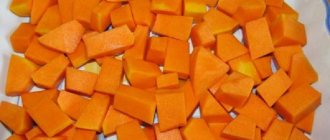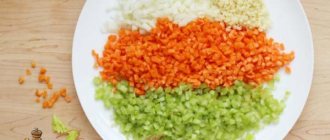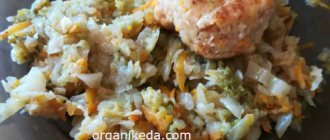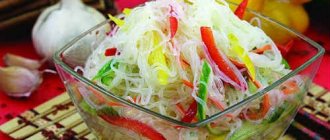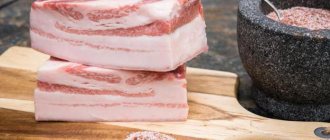What is feijoa
The fruit reminds many people of pineapple, apple or strawberry in taste. In terms of external similarity, the berry is similar to kiwi, although it is half the size and without hairs. Feijoa is a berry that grows mainly in wild forests and takes root in subtropical areas. The smooth green peel confuses the buyer, since it is difficult to determine the ripeness of the fruit by this criterion. Ripe fruits have a unique taste. Ripe feijoas taste very soft and sweet.
Where does it grow
South America is considered the birthplace of feijoa. The plant is suitable for a subtropical climate; it is grown en masse in Argentina, Brazil, and Uruguay. The plant looks like a green bush, the height of which reaches three meters. The leaves are often large and have a dense texture. It begins to bear fruit after 3-5 years of life. In June, the plant begins to bloom.
Season in Russia
The plant is planted mainly in the south of Russia, in the subtropical part. The fruit reaches supermarket shelves from Transcaucasia, Turkmenistan, Crimea or Azerbaijan. The season starts from September-November and ends in December-January. Ripe fruits are soft and spoil quickly, so they are delivered to Russia while still unripe. There is a high chance of buying a green fruit in a supermarket or market if you don’t know what a ripe one looks like. To feel the taste of real, soft feijoa, leave the fruit for 1-2 days in a warm room.
Benefits and harms
The fruit contains many useful trace elements, vitamins, antioxidants and minerals. First of all, it contains a high percentage of iodine, which people lack so much in the fall and winter. The fruit contains 35-40 mg of iodine per 100 grams of its weight, as well as phenols and pectins. It is recommended to add it to food for people suffering from joint diseases. The benefits of feijoa are best seen when eaten fresh, as vitamin C is preserved. Other beneficial properties:
- helps with viral diseases, strengthens the immune system;
- useful for intestinal function due to the fiber in the composition;
- eliminates problems with the thyroid gland;
- slows down the development of hypertension and atherosclerosis;
- useful for diseases of the cardiovascular system.
The fruit contains essential oils, which are excellent antiseptics. The dried peel can be added to tea. An allergic reaction to the fetus occurs in rare cases. If redness or rashes appear on the skin, you should stop using the product. Contraindication for use is diabetes. The fruits contain a high percentage of fructose and sugar. In case of obesity, pregnancy, or lactation, it is not recommended to abuse the product.
Feijoa ground with sugar
| Feijoa | 1 kg |
| · Sugar | 1 kg |
Sterilize jars and lids in advance.
First, prepare the berries: wash and cut off the stems. Then puree them (you can use a blender for this).
Place the puree in a bowl, add sugar and leave until the sugar is completely dissolved (about two to three hours).
Place the puree into jars, close them, and refrigerate.
How to choose feijoa fruits
Unripe fruit can be easily recognized even from a photo. The unripe fruit has a light green peel with a glossy surface, without a single wrinkle. The berry will be very hard and the flesh will be white. If a person tries unripe feijoa, he may be disappointed and decide that they all taste like that. Unripe fruit should be stored for 2-3 days, then it will ripen, become soft and tasty.
Dark spots on the peel indicate that the fruit is overripe. The seller may claim that this is how iodine seeps onto the surface. This is an incorrect statement. The fruit contains a lot of iodine, but not on the peel. Inside, the overripe fruit has brown flesh. A high-quality fruit has a green peel, without spots, stripes or dents. The surface should be wrinkled and the fruit should be soft inside. The pulp is similar to a jelly-like mixture, its color is close to transparent. These feijoas are the most delicious and nutritious. Their shelf life is 2 weeks.
How to cook feijoa?
In countries where the fruits ripen in abundance, they are used to make not only sweet dishes, but also seasonings, marinades, and side dishes. We won’t complicate our lives and just prepare vitamin jelly. And what’s left will be eaten raw.
Classic feijoa recipe with sugar without cooking
The composition of ingredients is limited to two items. You will need:
Preparation, step-by-step instructions:
- Wash the raw materials, dry them, cut off the excess.
- Grind.
- Pour a kilo of sugar into a wide bowl and stir with fruit puree.
- Leave for an hour or an hour and a half until the crystals completely dissolve.
- Stir again, pour into jars, close, and refrigerate.
Feijoa with nuts
Let's not stop at two ingredients, but add a “zest” to them - nuts. But not ordinary walnuts, but cashews (for a walk, just for a walk!).
- Prepare the feijoa.
- Grind and mix with an equal amount of sugar.
- Chop (or leave as is) 300-500 grams of cashews. Add to mixture. Keep in mind - this will add extra sweetness. Wash the nuts first, heat them in a frying pan, and cool.
- Stir and transfer to a glass container.
Feijoa recipes
The fruit itself is very tasty and can be eaten raw. This way all vitamins and microelements are preserved. The fruit is added to dessert dishes, as well as to salads with chicken, beef, and fish. The exotic fruit makes excellent smoothies in combination with apples, kiwi, pineapple and others. If you are losing weight, you can make vitamin cocktails with feijoa fruit, beets, and carrots.
- Time: 10 minutes.
- Number of servings: 4 persons.
- Calorie content of the dish: 320 kcal/100 g.
- Cuisine: European.
- Difficulty: easy.
Feijoa goes well not only with other fruits, but also with walnuts. Salad helps cleanse the intestines, remove waste, toxins, and speed up metabolism. A light and nutritious dish containing a lot of fat and carbohydrates. Salad is recommended for breakfast. It starts metabolism and speeds up brain function due to its high fat content. The dish is high in calories, perfectly satisfies the feeling of hunger and gives you energy.
Ingredients:
- feijoa – 200 g;
- beets – 0.5 kg;
- walnuts – 15-20 pcs.;
- olive oil – 4 tbsp. l.
Cooking method:
- Boil the beets and place in a bowl to cool.
- After that, peel it and grate it with the large side.
- Peel the skin from the middle of the feijoa and chop it.
- Peel the nuts and chop them into small pieces.
- Mix all ingredients, add salt to taste and olive oil.
Sauce
- Time: 40 minutes.
- Number of servings: 8-9 persons.
- Calorie content of the dish: 85 kcal/100 g.
- Purpose: for dinner.
- Cuisine: Brazilian.
- Difficulty: above average.
The sauce will delight you with its unusual, spicy taste, as well as its unique aroma. It is perfect for those who love spicy food. The sauce can be served with anything. It will be combined with country potatoes or fries, pasta, pork steak, chicken wings or battered fish. It takes a lot of time to prepare, but the result is worth it.
Ingredients:
- feijoa – 7 pcs.;
- parsley – 20 g;
- cilantro – 20 g;
- garlic – 1 head;
- sugar – 25 g;
- marjoram – 20 g;
- grated paprika;
- salt;
- pepper.
Cooking method:
- Peel the berries and cut into small slices.
- Cook them over low heat until the berries soften. Stir frequently and remove the film.
- Beat the berries with a blender and grind through a sieve.
- Chop the garlic and add to the mixture, add salt.
- Stir and gradually add sugar, paprika, pepper.
- Chop the marjoram, parsley and cilantro. Add to sauce, stir.
- Let the sauce sit for 1 hour on the refrigerator shelf.
Raw jam
- Time: 15 minutes.
- Number of servings: 10 persons.
- Calorie content of the dish: 194 kcal/100 g.
- Cuisine: Brazilian.
- Difficulty: easy.
When making jam, you don’t have to stand near the stove for hours, boil jars, or follow the proportions exactly. Feijoa makes excellent jam, which can be eaten immediately, and, if desired, can be prepared for future use for the winter. Preparation will take 10-15 minutes, but you can please your guests and family with a pleasant dessert for tea. Jam is spread on buns and the tops of cakes and pastries are decorated.
Ingredients:
- feijoa – 1 kg;
- sugar – 1 kg;
- walnuts – 200 g.
Cooking method:
- Cut the fruit into pieces, then grind them with a mixer.
- Pour sugar into the resulting mixture.
- Chop the peeled nuts and add to the jam.
- Mix again with a mixer until the mixture becomes homogeneous.
- It is advisable to let the jam sit for 2 hours in the refrigerator.
Pancakes
- Time: 30 minutes.
- Number of servings: 6 persons.
- Calorie content of the dish: 305 kcal/100 g.
- Purpose: for breakfast.
- Cuisine: Brazilian.
- Difficulty: easy.
Pancakes are traditionally considered a breakfast or afternoon snack food. This recipe features unusual pancakes. For preparation you will use wheat flour, mint. When combined, these ingredients give a unique exotic taste. The recipe is suitable for those who are tired of the usual Russian pancakes with raspberry jam or sour cream.
Ingredients:
- eggs – 3 pcs.;
- wheat flour – 1 cup;
- feijoa – 500 g;
- milk – 3 glasses;
- mint – 60 g;
- sugar – 4 tbsp. l.;
- sunflower oil;
- lemon;
- salt.
Cooking method:
- Mix eggs, milk and flour in a bowl, add a little salt.
- Grate the lemon zest. Pass the middle of the feijoa through a meat grinder or blender along with lemon juice and mint leaves.
- Heat a frying pan, pour in sunflower oil.
- Pour the dough into a thin layer. After 5 minutes, flip the pancakes to the other side.
- Grease the prepared pancakes with filling and wrap them in a tube. Sprinkle lemon zest seasoning over top.
- Time: 10 minutes.
- Number of servings: 5 persons.
- Calorie content of the dish: 455 kcal/100 g.
- Purpose: for breakfast, afternoon snack.
- Cuisine: European.
- Difficulty: easy.
Cocktails and smoothies made from feijoa contain useful substances that the body needs for active work. In combination with other fruits, this drink turns into a real vitamin boom. Smoothies are especially popular among children. If your child cringes at the sight of fruit, then make him a smoothie using a simple recipe. Strawberry milk smoothie is served for a sweet table or breakfast.
Ingredients:
- white ice cream – 0.5 kg;
- strawberries – 1 kg;
- lemon juice – 5 tbsp. l.;
- feijoa – 3 pcs.;
- sugar – 2 tbsp. l.
Cooking method:
- Mix all ingredients in a blender.
- Pour into glasses and serve.
Mousse
- Time: 20 minutes.
- Number of servings: 5 persons.
- Calorie content of the dish: 340 kcal/100.
- Purpose: for breakfast, for tea.
- Cuisine: European.
- Difficulty: easy.
The mousse turns out very sweet, but not disgustingly cloying. This is achieved by adding citric acid. Homemade soufflé is better than store-bought jam - store-bought canned goods do not contain anything healthy. The recipe is very simple, the dessert will be a wonderful addition to the sweet table. Feijoa and citric acid mousse can also be greased with cakes, muffins, cookies, and used as a filling for sweets.
Feijoa. How is it useful? Preparation for the winter.
Found an error in the text? Select it, press Ctrl + Enter and we will fix everything!
Feijoa (novolat. Feijoa
) is a green oblong berry native to South America. In size, feijoa is 5-7 cm in diameter and weighs approximately 20-120 g. When ripe, the fruit becomes very juicy with a slight sourness.
Legend and discovery
There is a legend about the origin of feijoa. About how a young man was in love with a sea princess, but yearned for land. For his decision to return to solid land, the sea king turned him into a tree with the aroma of the sea breeze in its fruit.
A new plant was discovered at the end of the 19th century. in Brazil during a scientific expedition and received its name in honor of the director of the natural history museum, Joao Feige. In Europe, the fruit first appeared in 1890 in France. From there, feijoa spread to the Mediterranean countries, Crimea and the Caucasus. The tree is very heat-loving and can withstand maximum frosts down to -10°C.
Description
The feijoa peel is quite dense and tart in taste, and the flesh is soft and juicy with a small amount of seeds. In this case, the entire fruit is used. Some people prefer to eat only the inside of the fruit, forgetting that a large amount of useful substances are found in the peel. The peel can also be dried and added to flavor tea. Feijoa ripens from mid-October to almost the end of November. Therefore, this berry is very popular in countries of the temperate climate zone, where during this period cold weather is already setting in and fresh fruits begin to fade.
Feijoa collection and storage
Feijoa is harvested when the berry is not yet ripe - this allows it to be transported without damage. When choosing feijoa, you need to try it by touch. The fruits should be soft and without visible damage. If the feijoa is hard and there is nothing else, then it can be left for several days in a well-ventilated room at a temperature of 20-23°. Such conditions will allow the fruit to ripen naturally. In order to definitely check the quality of the feijoa fruit, it must be cut. The pulp of a ripe berry is transparent. If the flesh is white, then the fruit is not ripe; if it is brown, it is already spoiled.
You can store feijoa in the refrigerator in the fruit and vegetable section, but, like any other seasonal berry, not for long. Depending on the degree of ripeness of the berry, this is from 7 to 14 days. During storage, feijoa loses moisture, which makes it sweeter. You can also make jam from feijoa, which can be consumed throughout the winter. To do this, you need to wash the feijoa, trim the inflorescence and grind it. Sugar must be added to the puree in a 1:1 ratio. Initially, the jam will be green, but later it may acquire a brown tint due to the pigment of the seeds. With this method of harvesting feijoa, all its beneficial properties are preserved.
Feijoa uses
The berry is widely used in cooking (compotes, jam, baked goods, desserts, salads, marinades, wine, tinctures), cosmetology and independently as a medicine. When consuming feijoa, not a single case of allergic reactions has been identified.
Nutritional value per 100 grams:
Feijoa recipes with citrus fruits
You can prepare exotic berries without processing them at high temperatures. In its raw form, the product is healthier and no less tasty. It is no secret that raw foods retain more nutrients and valuable substances.
Feijoa goes well with other citrus fruits:
- orange;
- lemon;
- lime;
- tangerines.
You can safely experiment, creating new, unique tastes. Below are two recipes using citrus fruits.
Feijoa with orange - the best recipe
Even gourmets will enjoy “live” feijoa jam. It has a sweet and sour taste obtained through the combination of miracle berries and orange. The cooking process is simple. The amount of sugar can be adjusted or even replaced with honey.
Ingredients:
- feijoa, weighing 1 kg;
- medium sized orange;
- 0.5 kg sugar.
Cooking process:
- Wash citrus fruits thoroughly and dry.
- Cut the berries into small slices and grind in a blender.
- Orange – also, peel, divide into parts, grind in a blender.
- Combine both mixtures, stirring thoroughly until smooth. Let it brew for 3 – 4 minutes.
- Pour sugar into the citrus mixture (can be replaced with honey). Stir.
“Live” citrus jam is ready! Now all that remains is to put it in jars and put it in the refrigerator.
Winter preparations with orange and lemon
In addition to combining with orange, feijoa goes well with lemon.
Ingredients:
- lemon
- orange;
- 4 feijoas;
- 5 grams of ginger root;
- 150 grams of sugar.
Preparation:
- Rinse the lemon thoroughly, cut off a third part. Slice without removing the peel.
- Do the same with the orange as with the lemon.
- Remove the peel from the berries and cut into two equal parts.
- Peel the ginger root and pass through a meat grinder along with lemon.
- Grind the orange and feijoa separately in the same way.
- Combine all ingredients in one container, sprinkle with sugar. Stir until the sugar is completely and evenly distributed.
- Divide citrus jam into prepared containers. Cool. Place in the refrigerator.
Beneficial properties of feijoa
Composition and presence of nutrients
Feijoa fruits contain vitamins (, B1, B2, B3, B5, B6, PP), micro- and macroelements (iodine, calcium, potassium, sodium, magnesium, phosphorus, iron, copper, zinc, manganese), acids (malic, folic ) and essential oils with pineapple and strawberry aroma. Due to the presence of easily digestible proteins and fats in the pulp of the fruit, feijoa is considered a dietary food, which can be used to replace one of the meals or be used in dishes while following a diet. This will make up for the lack of vitamins and reduce weight.
Feijoa is the only plant in the world whose iodine content exceeds seafood. It is in a water-soluble state, so it is well absorbed by the body. Doctors prescribe feijoa fruits to people with thyroid disorders and mental stress. It is also used in the treatment and prevention of diseases such as gastrointestinal inflammation, gastritis, atherosclerosis, vitamin deficiency, hypovitaminosis, pyelonephritis, gout, Graves' disease, constipation.
The peel of the fruit contains biologically active substances cahetin and leukoanthocin, which are powerful antioxidants with a preventive effect on cancer.
Vitamin C and aromatic essential oils of feijoa are used in the treatment of colds, acute respiratory infections and flu, and also as an immunomodulator. For treatment, it is better to consume the fruits with a warm drink in the form of jam.
The use of feijoya in cosmetology
Feijoa cosmetic masks have anti-inflammatory, rejuvenating and nourishing effects. To prepare the mask, mix 1/3 of chopped feijoa with yolk, 2 tbsp. spoons of cottage cheese and 1 tbsp. spoon of olive oil. Apply the resulting mixture to the face and neck for 20 minutes. After the time has passed, rinse the mask with water.
Feijoa in cooking
When preparing dishes from feijoa, you should take into account its taste combination with other products. So feijoa in salads harmonizes with oily and citrus fruits, with fresh and boiled beets, carrots, and apples. For dressing it is better to use low-fat sour cream or yogurt.
Dangerous properties of feijoa
Due to their high sugar content, ripe feijoa fruits are contraindicated for people suffering from
Hello friends!
Do you know what feijoa is? What kind of overseas fruit is this? How is feijoa beneficial for our health?
It turns out that this is a plant native to the tropics, from South America. And the fruits of this plant are usually called berries, not fruits!
From this article you will learn:
How is feijoa beneficial for human health?
There is an unusual legend among the people, according to which a beautiful young man was in love with a sea princess.
But homesickness overcame him, and the young man decided to escape from the sea kingdom.
For this, the king of the sea depths turned it into a beautiful feijoa tree, the fruits of which in color resemble the azure of the sea and smell of a light breeze.
What is feijoa?
Feijoa or Akka Sellova is a type of evergreen tree (up to 4 meters in height) of the genus Acca (Latin Acca), which belongs to the Myrtaceae family (Latin Myrtaceae). The genus includes only three species, of which the most common in the feijoa culture (lat. Feijoa sellowiana).
Botanical characteristics of the plant
Feijoa is an evergreen large spreading shrub or tree, reaching a height of up to 5 meters.
The fruit is a fleshy, large, juicy berry weighing up to 50 g, dark green in color with an unusual strawberry-pineapple flavor mixed with kiwi.
The homeland of feijoa is considered to be the mountainous areas of southern Brazil, Colombia, Uruguay and northern Argentina.
Feijoa photo
What does feijoa taste like?
These fruits have a sweet and sour taste, with the aroma of pineapple and strawberries. This is thanks to the special essential oil contained in feijoa.
But this taste and aroma appears only in fairly ripe ripe fruits, in which the pulp already resembles jelly.
But, unfortunately, such ripe berries cannot be transported at all, so they are picked when they are still completely green and hard.
But it is believed that even such unripe fruits, when they are artificially ripened, are also very beneficial for the body.
Feijoa - Health Benefits
Chemical composition of fruits
Feijoa fruits contain sucrose and fructose, organic acids, essential oil, water, pectin, vitamins B1, C, A, catechin and tannin, microelements (strontium, calcium, chromium, selenium, zinc and iron).
The main advantage of feijoa is its high content of iodine salts - 1 kg of fresh berries contains about 10 mg of water-soluble iodine, which is equal to the amount of this element in seafood.
Amino acids are represented by arginine, asparagine, glutamine, tyrosine, alanine.
Beneficial properties of overseas feijoa berries
So, what are the benefits of feijoa:
- High content, which is very necessary for strong immunity.
- Adequate soluble and insoluble fiber content.
- Feijoa fruits contain a decent amount of protein, including essential amino acids.
- A significant content of various biologically active substances from the category of antioxidants, which help maintain youth and health at a good level for a long time.
- Excellent prevention of cancer. Ideally cleanses the blood, removes toxins, poisons, waste from body cells.
- Helps you lose weight, quickly and easily get rid of a couple of kilograms. Especially if combined with exercise ☺
- The peel of this fruit is considered edible, and it contains the maximum amount of useful substances (including cancer-protective ones). Therefore, eat it whole with the peel, just rinse it very thoroughly first! But the peel does not have a very pleasant, tart taste. Although, I think those who really need it will eat it with the peel ☺
- An excellent therapeutic and prophylactic remedy for gastritis, hepatitis, pancreatitis, atherosclerosis, pyelonephritis.
- An ideal remedy for vitamin deficiency and inflammation in the gastrointestinal tract.
- It perfectly removes excess fluid and prevents the appearance of edema.
- Improves complexion, saturates blood with oxygen.
- Helps with rheumatism, has antibacterial, antifungal properties, treats acne, acne on the skin.
- Calms, relieves high blood pressure, relieves headaches, lowers blood sugar and cholesterol levels.
- Helps with painful, heavy menstruation.
- An excellent remedy for diseases of the heart and blood vessels.
- It helps those who suffer from joint diseases and salt deposits.
How to eat feijoa?
Let's look at the main ways you can eat feijoa:
- It can (and should ☺) be eaten fresh more often.
- You can add it to various dishes, desserts, make jam, jam, compote.
- Often the fruits are ground with sugar or honey and stored in the refrigerator. A wonderful remedy for strengthening the immune system instead of regular jam.
- Sometimes feijoa is served along with meat and fish dishes.
- Freshly squeezed juice from this fruit will bring the greatest health benefits.
- To do this, you need to choose sweet and juicy fruits. Without peeling the skin, squeeze out the juice with a press. An auger juicer is perfect.
- The juice can be mixed with juices from other fruits and berries.
- You can make smoothies in which you can also mix feijoa with various fruits, berries, herbs, and honey.
- An excellent and tasty drink is fruit juice with the addition of honey. To do this, pure feijoa fruits are crushed with water and honey in a blender.
- Very often, thoroughly washed, dried and ground fruit peel is used as a therapeutic and preventive natural supplement.
- The dried peel is used to brew medicinal teas.
Is it possible to eat feijoa with the peel?
Phenolic compounds of katerina and leucoanthocyanins, found in the peel of feijoa fruits, are considered the strongest antioxidants; they also help prevent cancer and delay the aging of the body.
Therefore, the fruit can be eaten with the peel, although the latter has a tart, astringent taste.
Feijoa compote for the winter recipe
Miracle berries taste like strawberries. They make a delicious compote. They can diversify the holiday table or simply pamper your loved ones with a delicious drink.
Ingredients:
- 600 g feijoa;
- 2.2 liters of water;
- 200 g sugar;
- 0.5 teaspoons of citric acid.
Cooking method:
- Rinse the fruits thoroughly, remove the ends. Transfer to a 3 liter jar. Fill with boiling water to the top.
- Leave to infuse for an hour.
- Pour the first infusion into another container and add sugar. You should get a syrup; to do this, boil the liquid for about 30 minutes. At the very end, add citric acid.
- Fill the feijoa jars a second time, roll them up and turn them over, placing them on the lids. Cover with a blanket on top.
- After a day, you can put the compote in the refrigerator.
